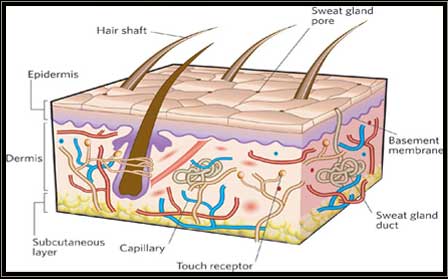Lumps, Bumps, and Cysts

There are literally hundreds of different kinds of lumps, bumps, and cysts associated with the skin. Fortunately, the vast majority of these are harmless and painless. The chart below provides a guide for some of the most common forms of skin lumps, bumps and cysts.
Dermatofibromas
Characteristics
- Red, brown or purple growth; generally benign
- Usually found on arms and legs
- Feels like a hard lump
- Can be itchy, tender to the touch and sometimes painful
Treatment
- Usually does not require treatment
- Most common removal by surgical excision or cryotherapy (freezing it off with liquid nitrogen)
Epidermoid Cysts (Sebaceous Cysts)
Characteristics
- Round small bumps, usually white or yellow
- Forms from blocked oil glands in the skin
- Most commonly appear on the face, back, neck, trunk, and genitals
- Usually benign; occasionally leads to basal or squamous cell skin cancers
- If infected, will become red and tender
- Can produce a thick yellow, cheese-like discharge when squeezed
Treatment
- Antibiotics might be prescribed if there is an underlying infection
- Dermatologist removes the discharge and the sac (capsule) that make up the walls of the cyst to prevent a recurrence
- Laser surgery may be used for sensitive areas of the skin, like the face
Folliculitis
Characteristics
- Red pimples around areas having hair
- Inflammation of the hair follicles
- Caused by infection or chemical or physical irritation (e.g., shaving, fabrics)
- Higher incidence among people with diabetes, the obese or those with compromised immune systems
Treatment
- Topical antibiotics
- Oral antibiotics
- Antifungal medications
- Eliminating the cause
Keratoacanthoma
Characteristics
- Red, dome-shaped, thick bumps with craters in the center
- Abnormal growth of hair cells
- Triggered by minor skin injury such as a cut or bug bite
- Ultraviolet radiation from sun exposure is the most common risk factor
Treatment
- Cryotherapy (freezing off the bump with liquid nitrogen
- Curettage (surgically cutting out or scraping off)
Keratosis Pilaris
Characteristics
- Small, rough white or red bumps that neither itch nor hurt
- Usually worse during winter months or when there is low humidity and the skin gets dry
Treatment
- Usually does not require treatment
- In most cases disappears on its own by age 30
- Intensive moisturizing is the first line of treatment
- For more difficult cases, the use of medicated creams with urea or alpha-hydroxy acids
Lipomas
Characteristics
- Soft fatty tissue tumors or nodules below the skin’s surface
- Usually slow-growing and benign
- Appear most commonly on the trunk, shoulders, and neck
- May be single or multiple
- Usually painless unless putting pressure on a nerve
Treatment
- Usually does not require treatment unless it is compressing on the surrounding tissue
- Easy to remove via excision
Neurofibromas
Characteristics
- Soft fleshy growths under the skin
- Slow growing and generally benign and painless
- Pain may indicate a need for medical attention
- May experience an electrical shock at the touch
Treatment
- Usually does not require treatment, particularly if it does not cause any symptoms
- If it affects a nerve, it may be removed surgically
Skin Cysts
Characteristics
- Closed pockets of tissue that can be filled with fluid or pus
- Can appear anywhere on the skin
- Smooth to the touch; feels like a pea underneath the surface
- Slow growing and generally is painless and benign
- Only needs attention if it becomes infected or inflamed
Treatment
- Usually does not require treatment; often disappears on its own
- May need to be drained by a physician
- Inflamed cysts respond to an injection of cortisone, which causes it to shrivel
